2014 Niner RIP 9
(discontinued)
| Where To Buy | |||
|---|---|---|---|
Free shipping on orders over $50 (continental U.S. only).
International shipping available. Some exclusions apply. |
Free shipping on orders over $50 (continental U.S. only).
International shipping available. Some exclusions apply. $70.00
|
||
Free shipping on orders over $50 (continental U.S. only).
International shipping available. Some exclusions apply. |
Free shipping on orders over $50 (continental U.S. only).
International shipping available. Some exclusions apply. $2,395.00
|
||
Review by Brandon Turman // Action photos by Courtney Steen
The Niner RIP 9 is the company's best-loved trail bike, and has been for a number of years. For 2014, they decided to make it even more awesome. They upped travel 5mm to 125mm, shortened the chainstays 5mm, added ISCG tabs, boosted the stiffness with the addition of a 12x142mm rear axle, and moved to an interesting new tubing manipulation process. They also dropped half a pound of weight along the way, bringing the bike right up to speed for the new year. Not too shabby...
We've already reviewed the new full-carbon RIP 9 RDO during our 2013 Test Sessions (and loved it), so how does this new aluminum version stack up? We spent two and a half months on the trails to find out.

The RIP 9 will be sold as a complete spec'd with SRAM X1, Shimano XT, or SRAM X01. It's also possible to pick it up frame + shock only. Niner spoiled us a little by including a RockShox Reverb, Avid X0 Trail brakes, and SRAM XX1 drivetrain on our test build.
RIP 9 Highlights
- Airformed aluminum alloy construction
- 29-inch wheels
- 125mm (4.9-inches) of travel
- 44/56mm tapered headtube
- 70.5 to 69.5-degree head angle (with 120 to 140mm fork, respectively)
- 72.5-degree seat tube angle
- 22mm bottom bracket drop
- 450mm (17.7-inch) chainstays
- Standard 73mm threaded bottom bracket shell with removable ISCG-05 mounts
- 142mm rear spacing with 12mm through axle
- Frame weight (size Medium): 6.85-pounds (3.11-kg)
- MSRP $1,849 frame + shock only, with completes ranging from $2,999 to $4,799

At a time when high-end carbon frames are all the rage, Niner took a good look at ways to reduce the weight and boost strength in their aluminum frames, bringing the performance of their more affordable aluminum offerings into line with other brands' pricier carbon offerings. How? Through the use of a process they call airforming.
Niner says this process is similar to hydroforming, but uses super-heated air pushed into the tubes at high pressure while inside a mold. The forming can take 3-5 minutes per tube and allows the wall thickness and butting to maintain a very high tolerance, producing a tube shape to extreme precision. Tubes are butted before entering the heated mold via a mandrel (traditionally), with no internal molds. The process is able to shape the tube while maintaining a precise wall thickness without distorting the butting profile. Ultimately this means that they have greater control over wall thickness and material uniformity, allowing the use of less metal. Tubes that are manipulated using this process can be up to 25% lighter than a similar hydroformed shape at the same strength.
The process also allowed them to eliminate several big welds. Check out the main pivot area in the photo above. Airforming allowed them to form the needed shape to fully integrate the pivot into the seat tube as opposed to welding an additional piece onto a round tube, reducing the weight. Weight is 6.85-pounds for a medium frame and shock, which is roughly 0.5-pounds lighter than the last version of the RIP 9 and just 0.65-pounds heavier than the recently released carbon RIP 9 RDO.

Out back, the RIP 9 relies on Niner's patented CVA (Constantly Varying Arc) suspension system, which capitalizes on the increased bottom bracket drop inherent in 29er frames. Claimed to be efficient in every chainring, CVA is said to isolate pedaling forces and remain fully active under all conditions. Niner describes the basics well in this paragraph:
"In order to isolate pedaling forces across a broader range of gearing, the CVA’s ‘instant center’ location is in front of the drivetrain. With the lower pivot under the bottom bracket, the force at the rear axle resulting from chain tension pulls the two linkages in opposite directions in all gear choices, effectively isolating the drivetrain from the rear triangle. In other words, when a rider cranks on the pedals, the chain is trying to pull the lower link down and away from the bottom bracket, and the upper link in its regular rotational path. Since the rear triangle is one piece, these opposing forces cancel each other out, leaving the only outlet for chain-induced torque being rotation of the rear wheel, where it’s most wanted. Past the rearward-most position at sag, the axle path moves in towards the bike at a gradual, constantly varying arc, which insures that there is minimal chain growth throughout the length of travel. This also means minimal pedal feedback in the drivetrain while cycling the suspension, essentially isolating it from the fully active movement of the suspension design."
Driving the CVA system is a set of aluminum rockers. To make the bike chainguide compatible, Niner had to nudge the lower linkage slightly to the non-driveside to provide additional clearance when compared to the original RIP 9. Given the lower link's slightly exposed location, it is prone to rock strikes, and we dinged it a few times during the duration of our test.

Shorter riders will love the swoopy top tube, which provides plenty of clearance. Note that the Small frame has bottle mounts under the downtube, while other sizes have mounts inside the frame.
Speaking of clearance, Niner also recognized that many riders are running higher volume tires these days, and improved tire clearance over the old RIP 9. Tires up to 2.4 inches should fit the frame. With 2.35-inch Schwalbe tires installed, we did notice that mud clearance is pretty tight on the upper bridge, with only ~1/4-inch of room should things get messy.
Perhaps the most clever detail of the bike's design are the new oversized Angular Contact Bearings that hold everything together in three pivot locations. The right side linkage plate has an integrated hollow axle that connects to the other side, similar to a set of cranks. High-end Enduro Max Magnetite Black Coat bearings on both sides fit into co-molded cups. An adjustable cone removes any play in the system and the left side link is attached using a standard Shimano cassette tool. This integrated axle solution eliminates any pressed bearings, improves stiffness due to the larger diameter axles, and makes for a very free-moving linkage. We dig this. Torque specs are neatly printed on the hardware, which is incredibly convenient.
We also dig the subtle but rad color coordination. The hardware, chainguide adapter, stickers and stock bars all share the same candy apple red.
Cable routing for the rear derailleur and brake follows the top of the downtube, snaking past the rear shock on the way to the rear triangle. The cables rubbed against the shock body on our test sled, leading to some premature wear. This could be solved with a small but custom cable seperator, similar to the one found on the Specialized Demo 8, for example. Routing for the dropper post traces the side of the top tube. We'd love to see the dropper go internal on future evolutions of the frame.
On The Trail
We spent a few months getting to know the new RIP 9 on a pretty wide variety of Southern California trails, riding everything from wide open fun to some of the rockiest, rowdiest trails the Santa Barbara and Northern Los Angeles areas have to offer. Heck, we even rode it on a few downhill trails just for good measure.
At 5-foot 10-inches tall and equipped with a 50mm stem and 780mm wide bars, our size Medium bike was just a tad shorter in the reach department than we'd typically want, though still roomy and centered enough to be comfortable while climbing and descending. Sizing is slightly towards the small side of the spectrum, similar to Santa Cruz bikes, so consider sizing up. We suggest spending some time looking at the numbers or test riding a few sizes before making a decision.
The geometry seemed dialed from the get go, allowing the bike to climb well, descend very well, and also feel comfortable in the air. The head angle could be a tad slacker for our tastes, though, especially when things get steep and rocky. Luckily this can be accomplished with a Cane Creek Angleset since it's compatible with the frame. A taller fork could also help. Our test rig had a 130mm fork and 70-degree head angle. Bumping up to 140mm would give a little extra cushion and a more forgiving 69.5-degree head angle without adversely impacting the stack height or climbing characteristics.

Just like the RIP 9 RDO, we found the aluminum version to be remarkably confidence inspiring on downhill and technical terrain - for a 125mm trail bike, that is. The only times we found ourselves holding back was on super steep, washboarded, loose terrain. It can be ridden casually without getting into trouble but loves to be pushed, and by that we mean standing, pumping, and mashing on the pedals with all you've got. Some might find it a bit sluggish 'til you really get into it, which is when the bike comes alive. At speed, you know exactly where wheels are at all times, inputs are responded to immediately, and changing lines is easy to do.
The overwhelming sensation while riding this bike is one of stability. The thing tracks on rails and can hold off camber lines well, just like the carbon RDO. It turns well in downhill switchbacks, and the chainstay length/bottom bracket height strikes a good balance between stability and maneuverability. Getting the front end off the ground requires a good yank, but it manuals quite well once you're there. Jumping the bike is easy to do, with the only hinderance being the big ol' wheels that tend to squash lips.
Stiffness is every bit as good as the carbon model. Where the carbon one excels, however, is through choppy sections, helping to lessen the perceived harshness of the terrain and helping you maintain control.
With the bike's CVA suspension and RockShox Monarch RT3 HV shock set to 30% sag, the bike is very responsive, pumps well and offers good support throughout. Small bump performance is pretty good, though we wouldn't mind some more sensitivity in the shock. When we tested the RDO model, it was equipped with a FOX Float CTD, which seemed to suit the bike better in some ways, but pushed through the travel a bit too quickly. The tune on the Monarch is a tad harsher feeling through repeat bumps and ramps up a bit quicker than we think is ideal. Striking a balance between the two would be best.

Even with large casing tires, the bike rolls super quick. It feels light and relatively snappy for how big it is, making for an easier pedal on the ups and more playful ride on the downs.
Standing and sprinting yields little to no bob, and speed is readily abundant when mashing on it. Seated, even with firm pedal strokes no effort is lost when the shock is wide open, and we only use the firm mode when climbing fire roads. Body position while climbing is good, even with our short stem. It only requires a slide forward when things get super steep, and traction is always readily available. We rarely find the front end wandering around. Like most 29ers, when climbing at slower speeds over awkward terrain the bike feels a little off balance side-to-side. The steep-ish head angle does mean it handles slow-speed changes of direction well.
Build Kit
While our build kit varied from what is actually available to purchase as a complete, some of the parts are shared with the stock builds so we'll cover them. Save the Ergon grips, we didn't feel the urgent need to swap anything out. This was a personal choice, mind you. We also installed a set of Niner's new 780mm wide Flat Top RDO bars and 50 stem, which complement the bike really well from both a stiffness and aesthetics standpoint.

Setup tubeless, Schwable's Nobby Nic tires provide good traction while climbing on hard pack, rock, and loose terrain. Pointed downhill, they do well cornering in almost all conditions and roll fairly fast. In loose conditions things get a bit drifty and braking traction leaves something to be desired as the tires wear (somewhat quickly at that), but they are all-around consistent.
The American Classic All-Mountain 29 wheels provide enough stiffness under our 175-pound test rider, have dented only once, and remained true throughout the test. The tubeless interface was secure at all times, and we burped the tires only one time at ~30psi on an unintentionally large huck to flat.
SRAM's XX1 drivetrain, while not available on the stock builds, compliments the bike very well and worked flawlessly. Niner has smartly chosen to include an X01 build in their lineup, which offers a very comparable level of performance at a good cost break. The XX1 system yielded no chain drops, easy shifts, a dead silent bike, and gave plenty of range with 32-tooth ring up front. Just keep an eye on the derailleur's bolt tension during the first few good rides. They tend to loosen due to the clutch mechanism.
Long Term Durability
The RIP 9 proved to be a solid rig over the two and half months we rode it. Frame wise, only a few pivots loosened, so keep and eye on those during the initial break-in period. Niner's impressive Angular Contact Bearing pivot system was trouble free otherwise. The Enduro Max bearings used throughout the linkage are among the best available and provide great corrosion, water, and impact resistance. Niner also stands behind the RIP 9 with a two year warranty.

What's The Bottom Line?
As mentioned before, the RIP 9's overriding characteristic is stability. It's a bike that encourages you to get up and go, and acts best when pumping and mashing. Just like its carbon brother, the RIP 9 RDO, it pedals well, sprints well, climbs well, jumps well, and soaks up all types of hits well. There wasn't really anything we disliked.
So then, many of you are surely wondering - would we spring for carbon or aluminum? Niner's airformed tubing technique has allowed them to create a frame that is just 0.65-pounds heavier than the RDO version, and the frame + shock is $1,050 less than the plastic version. That's a sizable difference for anyone's bank account. The rider that will appreciate the carbon version more is one whose speeds and rowdiness level are at the far end of the awesome spectrum. Carbon's ability to deaden harsh trail feedback is undeniable, but the airformed alloy version does a great job of keeping up in all other aspects.
For the everyday trail rider, weekend adventurer, and the enduro racer who prefers a smaller bike, the RIP 9 will suit your needs quite well. And hot damn, it looks good, too.
Want more details? Roll over to www.ninerbikes.com for their latest and greatest.
Bonus Gallery: Check out 24 photos of the Niner RIP 9 up close and in action
About The Reviewer
Brandon Turman likes to pop off the little bonus lines on the sides of the trail, get aggressive when he's in tune with a bike, and to really mash on the pedals and open it up when pointed downhill. His perfect trail has a good mix of flow, tech, and balls-to-the-wall speed. He loves little transfers, rollers, and the occasional gap that gives him that momentary stomach in your throat kind of feeling. Toss in some rocky bits with the option to double over them or risk pinch flatting and you've got a winner in his book. In 13 years of riding he worked his way through the Collegiate downhill ranks to the Pro level. After finishing up his mechanical engineering degree, his riding focus turned to dirt sculpting and jumping with the occasional slopestyle contest thrown in for fun. Nowadays he's Vital MTB's resident product guy, putting in saddle time on nearly every new platform and innovation the bike industry has to offer.
1 member reviews
Thought I'd add my review to give people some additional feedback. First off, I've been riding a Rocky MountainSlayer for the past five years. While the Slayer is a great bike, I've grown tired of slogging 34 lbs uphill. The Slayer has treated me well otherwise. Once at the top, it always rules the downhill. It handled three days at Whistler just fine (with a downhill wheelset). But, for everyday riding, it's just a mental killer on the climbs.
I'm a bike shop employee, so I had access to Niner, Pivot, and Norco. I poured over reviews, rode a few bikes, talked to a bunch of people, and ultimately decided on the RIP 9. My size medium, 4-star build showed up two days ago. I built it up and took it up Emerald Lake that night. Emerald Lake is a classic Bozeman ride, 4 1/2 miles of climbing to an alpine lake, then back down. The trail is slightly wider than standard singletrack, presenting multiple line options most of the way. Bigger rocks at the top lead to a wicked fast, mostly dirt with some roots/rocks, remainder of the downhill.
The climb started well - the 27ish lb weight was immediately apparent. I started the climb with the shock wide open. Contrary to most reviews, with sag set to 30%, I was getting a fair amount of bob. I quickly locked the shock for the rest of the climb. With the SRAM X01 1x11 setup, I comfortably made my way to the top, though the 32T front is a bit too much. I never walked, but the steeps at the end were a bit of a grind. I'm swapping to a 30T tomorrow. One big difference coming from a 26er to a 29er - you cover more ground with each pedal stroke. What would have been a quad-exploding, too-slow cadence on the Slayer turned out to be fine on the RIP.
Once at the top, it was time to answer the big question - how well will the RIP 9 really downhill? After all, the 68ish degree head tube angle is definitely steeper than the 66 degree head on the Slayer. And, the 80mm stem is the longest stem I've ridden in at least 15 years. I'm no slouch on the downhills; I used to race DH a bit, I spent a lot of time on the lifts at Big Sky, and it's by far the most fun part of the ride. Well, after the first quarter mile, I knew I had chosen wisely. The RIP 9 flat-out rips. With the shock open and the 140mm Talas 34 set to Descend, the RIP 9 ate up everything in its path. Tracking was dead-on through off-camber, root-covered corners. Where the Slayer was sometimes a bit twitchy steering, the RIP was perfectly (surprisingly) stable - it went exactly where I was looking the entire time. There have been a few comments about 29ers being difficult in tight switchbacks. I never experienced that one bit, and there are some tight ones on Emerald. I did notice that I couldn't angle the bike quite as much under me around the switchbacks. That will probably come in a few rides as I figure that out, but really, I was holding just as fast a line through them as I would on the Slayer.
Bike fit - I'm 5'10", with oddly long arms, long legs, short torso. Contrary to the Vital review, I found the Medium bike layout long, definitely longer than my Large Slayer. I'm a bit leery of swapping to a short stem since the handling is so spot-on, but I may try it for kicks. The seat post is up a bit high out of the frame, but there was still 30mm left before the minimum insertion mark. As for the curved seat tube, there's plenty of depth in there for dropping the seat to DH height - not an issue.
Overall, I couldn't be happier with my bike choice. The Slayer is for sale. The RIP 9 blew my mind. The suspension design and geometry are superb - Niner truly nailed it. I was initially worried about jumping to the 29" wheel, and I heavily contemplated a 27.5. After riding the RIP, I have zero, and I mean zero, doubts that I picked the perfect bike for me. I don't plan on riding chairlifts with this bike - I made a decision to give up a bit of versatility in that regard to have a bike better for everyday use. If (when) I make it to Whistler again, ill demo a DH bike.
1 comments
Post a reply to: Review of RIP 9 after upgrading from RM Slayer
Specifications
| Where To Buy | |||
|---|---|---|---|
Free shipping on orders over $50 (continental U.S. only).
International shipping available. Some exclusions apply. |
Free shipping on orders over $50 (continental U.S. only).
International shipping available. Some exclusions apply. $70.00
|
||
Free shipping on orders over $50 (continental U.S. only).
International shipping available. Some exclusions apply. |
Free shipping on orders over $50 (continental U.S. only).
International shipping available. Some exclusions apply. $2,395.00
|
||







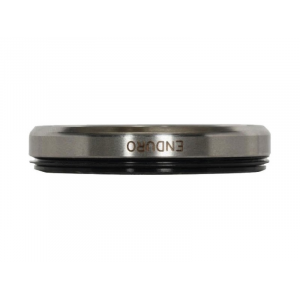












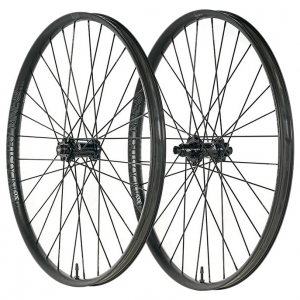












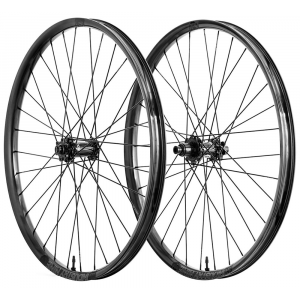






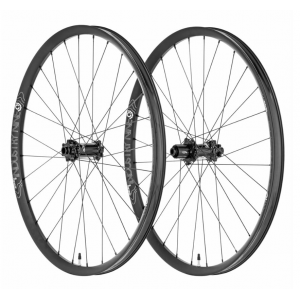


























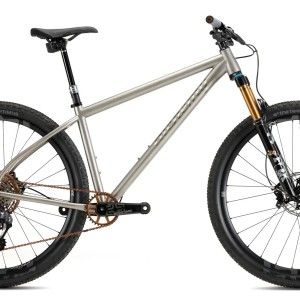

















5 comments
Post a reply to: Tested: 2014 Niner RIP 9 - Alloy Strikes Back